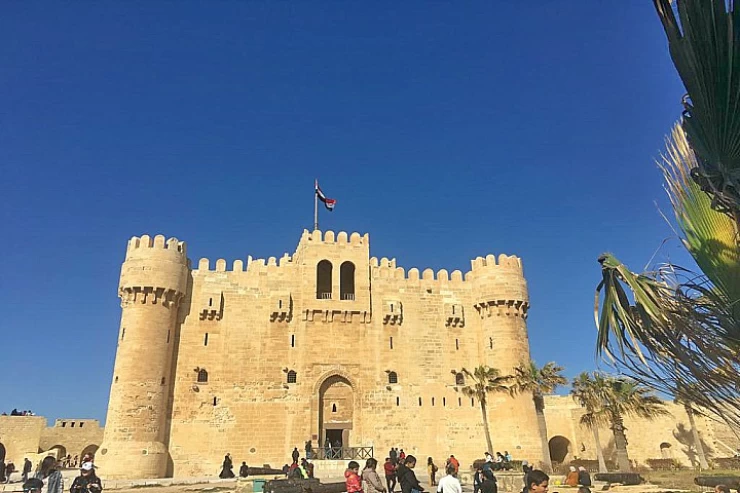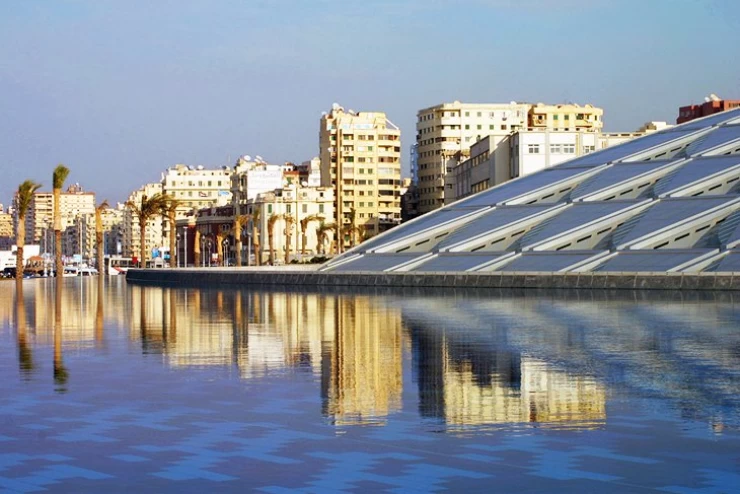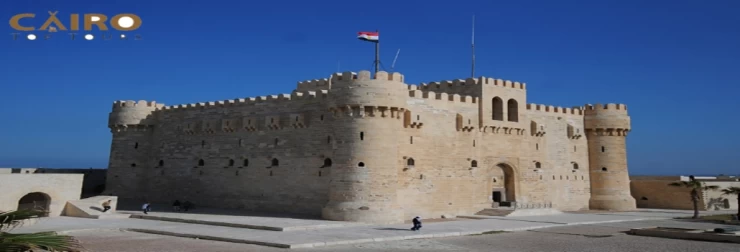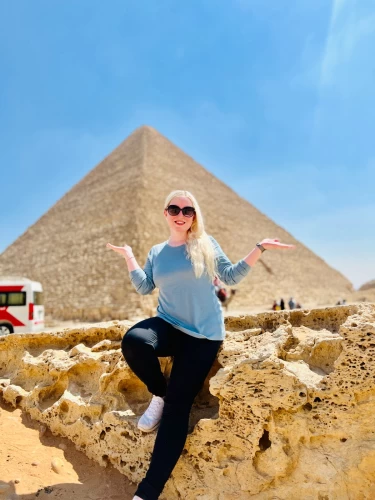-webp.webp)
The Catacombs of Kom el Shoqafa
Exploring the Enigmas of the Kom El Shoqafa Catacombs: An Overlooked Treasure in Alexandria, Egypt
Nestled on the coast of the Egyptian Mediterranean seaside city lies one of the most profound multicultural tales known in Egypt—the Catacombs of Kom el Shoqafa. This catacomb can quite easily be called one of the Seven Wonders of the Medieval Ages. Citing two ancient writings, rather confusingly, dolls, magic figures, and the whole edifice complex; Kom el Shoqafa has mesmerizing and exquisite underground structures for people to explore. however, shouldn’t be too difficult, as fusing Egyptian, Greek, and Roman cultures, traditions, religions, and practices is so remarkable and mind-boggling that it is especially true for any archaeologist or tourist. Creeping walls, magic figures, and the whole edifice complex; Kom el Shoqafa has mesmerizing and exquisite underground structures for people to explore.
Historical Background and Discovery
The term ‘Kom el Shoqafa’ refers to ‘Mound of Shards’ and its origin can be traced back to the second century AD. This serene age of history can be characterized by the confluence of Egyptian, Greek, and Roman cultures, as it was the time when Alexandria flourished as a center of trade and knowledge in addition to being a religiously charged city. The tomb complex was unearthed in 1900 when a donkey suddenly fell through the surface of the earth, thus exposing what was perhaps the most curious archaeological site of that age.
The catacombs started off as a tomb meant for only a few individuals, but historians are of the opinion that the catacombs ultimately became a bigger burial place for the rich people within the city of Alexandria. Its decorative art, its cross-cultural amalgamation, and the vast constructions built around it show that the catacombs were of great significance to the people of Alexandria.
Architecture and Design
The catacombs are three levels deep; however, the bottom level has been submerged in water owing to the adjacent Mediterranean Sea. Every level has something different to offer, but collectively they display both ancient Egyptian and Greco-Roman styles of architecture, the type that is typical of Egyptian Alexandrian artisans.
The structure starts with the spiral-designed staircase, which helps to get utter down the ancient graves. It is comprised of a central column used for lowering dead bodies and other materials. The designed boarded staircase is almost sculptural in nature and depicts the craftsmanship of that period. The guests go down to the first level, which is equipped with several burial rooms and an anteroom filled with vivid reliefs.
In addition to the many other interesting aspects of the catacombs are the sculpted sarcophagi and recesses in the walls, which present a variety of burials from several cultures. The primary tomb known as the Rotunda is adorned with three massive stone sarcophagi and carries a number of reliefs that combine both Egyptian and Roman elements, reflecting the cultural blending characteristic of this period in Alexandria.
Unique artistic features
The unique feature that stands out about the Catacombs of Kom el Shoqafa is their décor which incorporates Egyptian, Greek, and Roman art all in one. The reliefs and sculptures found in the catacombs show how different artistic traditions blend and coexist with each other.
In the main chamber of the tomb, we can see Roman and Hellenistic influences in the depiction of Egyptian gods and patterns. For example, Anubis, a figure of ancient Egyptian death, has been given the garb of a Roman soldier. In this, we clearly see the process of acculturation at work. Again, like the Greco-Roman Medusa, the head of which appears as a fierce protector in Roman homes, these images are intermixed with Egyptian motifs, such as the lotus and the papyrus plants.
The Hall of Caracalla is another notable element, which is understood as a chamber containing the coffins of young boys who died under the orders of Emperor Caracalla for his edicts. This part probably lacks much in terms of design embellishments but instead draws on the relevance of grievous and worshipful moments associated with the specific history of the catacombs as a refuge from, for so many people, the inescapable abyss of hopelessness when injustice could not be addressed, actively or passively, within the society.
The Hypogeum and Lower Chambers
The underground chambers, which have been mostly inundated, used to be elaborately constructed and contained further aspects of ancient funerary practices. The composed, structured design of these chambers would have been in the cooler, almost dark nature, providing an otherworldly aura that was in line with the sanctity of the venue.
Although present-day visitors do not have access to these submerged sections, the lower chambers would undoubtedly have been the catacombs' final resting place for more of the elite inhabitants of Alexandria. As the areas of the catacombs that are now out of reach remain situated within a territory of present-day mystery, this has only contributed more to the urges of the tourists who wish to at least see a trace of the bygone breathtaking beauty within these catacomb-like structures.
Significance of the Emergence of Those Symbols and Their Meaning
These catacombs are no ordinary resting place; they possess onyx stones of the cultural synthesis of Alexandria. Alexandria was a place synonymous with tolerance of cultures within its geographic hemispheres and the exchange of ideas as far back in history as when it was founded by Alexander the Great.
The Egyptian, as evidenced in the motifs of deities and arrangement of the tomb's interior, contributes to the site's connection with the ancient Egyptians’ understanding of life after death. At the same time, the artistic influences of the Greeks and Romans correlate with the more recent tendencies that enhanced the city of Alexandria. The catacombs, therefore, are a gastronomic marvel that embodies the ideal of cultural synthesis, providing hope that even the widest of arcs of cultures can accommodate each other with all the possible diversity.
Visiting the Catacombs of Kom el Shoqafa Today
Even today, the Catacombs of Kom el Shoqafa have more than a dozen riddle hairpins from centuries-old Alexandria. Entering the gloomy rooms where wide and intricate walls are lined with delicate etchings, one feels as if one has traveled back in history to that glorious time when the city of Alexandria enjoyed the zenith of the Mediterranean mission and trade.
Guided tours of the catacombs are comprehensive and usually start with telling something about the history of Alexandria and the relevance of the burial site. Starting from the sensational spiral staircase down to the central burial space and Hall of Caracalla, the tour guides explain the meaning of artworks and buildings. To history buffs, the tour is a chance to appreciate the rich culture that ancient Egypt housed and how this culture complemented Greco-Roman art.
The Catacombs of Kom el Shoqafa
The catacombs of Kom el Shoqafa are thought to be one of one of the most effective anthropology sites set in Alexandria. They were discovered before long because the twentieth century began and are thought to be one of the most important burials in Roman places. These tombs were excavated within the mother rock at the time of Emperor Aurelius, within the second century A.D.
These tombs represent the last nice existing construction for the sake of the ancient Egyptian religion. The characteristics of the Catacombs of Kom El Shohafa, its styles, and its decorations permit us to deduce that its construction was created in numerous periods, between the first, 2nd, and third centuries A.D.
Some discovered objects initiated in the years 117 and 138 A.D.
Historians agree that the catacombs were used till the top of the fourth century A.D. and were later abandoned. The invention of this necessary historical website was accidental; a donkey fell into most entrances of the tombs, over twelve meters deep, on September 20, 1900, and this caught the eye of the anthropology mission that had already been performed in the realm since 1892.
At present, the catacombs of Kom El Shoqafa are one of the most attractive in Alexandria. The doorway is formed by suggested spiral stairs of half a dozen meters in diameter and approx. ten meters deep, encompassing a cylindrical water well. These stairs were designed with larger steps at the start and smaller ones at the top, in keeping with the common rituals of the Roman period, and ended up in a primary basement.
This basement consists of a passageway that connects to a circular space, referred to as “the rotunda." Within the middle of it, there's a water well. On one aspect, there's an oblong space that was used as a banquet place. At the top of the circular space, there are steps resulting in a second basement, choked with rooms, corridors, chambers, and most of the graves of Kom El Shoqafa.
The "Rotunda," or circular space, incorporates a dome and six columns that support it. The water well is about eight 5 meters deep. The walls of this space are characterized by their red geometric shapes. Within the place, 5 heads of alabaster statues were found that are presently exhibited within the classical deposit of Alexandria.
The second space that may be discovered is understood as "triclinium." It's nine meters wide and eight 5 meters long and has the foremost outstanding decorations of Kom El Shoqafa. During this section, the relatives of the deceased met to eat throughout their visit to the catacombs.
The most necessary part of the second basement is the space where there are 3 sarcophagi with classical decorations. The center one presents reliefs on the difficult mummification process in Ancient Egypt.
The walls of the space have scenes portraying the Emperor of Rome sporting his crown and presenting his offerings to the god Isis. A United Nations agency is protecting the deceased along with her wings.
When departing the most chamber of Kom El Shoqafa, you'll be able to observe the god Egyptian deity, in soldier garments and Roman weapons, standing ahead of a ruler door. On the correct aspect, the god Egyptian deity is additionally diagrammatic, however now with a personality's body and dragon tail. of these scenes were derived from the mortuary art of Ancient Egypt.


















